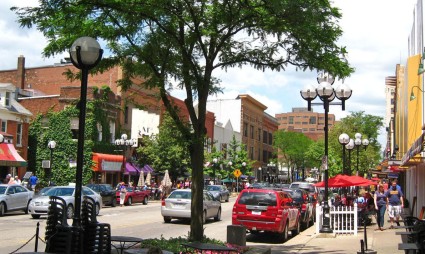Archive for October, 2012
.
“…no country, rich or poor, is immune to bad design…But we have to advocate for (humanized design) and many of us, until now, simply haven’t realized that we deserve better. We couldn’t imagine the alternative. But once you see what good design can do, once you experience it, you can’t unsee it or unexperience it. It becomes a part of your possible…”
– John Cary and Courtney E. Martin in The New York Times, “Dignifying Design“.
The movement to humanize our built environment needs more people who can analyze the difference between salutogenic and pathogenic places.
One way to acclerate the demand for safe, optimistic and meaningful habitats is to provide criteria for anyone to understand the contrast between the two scenes above.
In our previous post “Beyond drive-by design,” we listed five “Vital Signs” that by no means cover all the elements of a human-centric built environment, but these criteria provide a way to begin a critical conversation.
Let’s shine a light on the blind spots.
-Sharon VanderKaay

